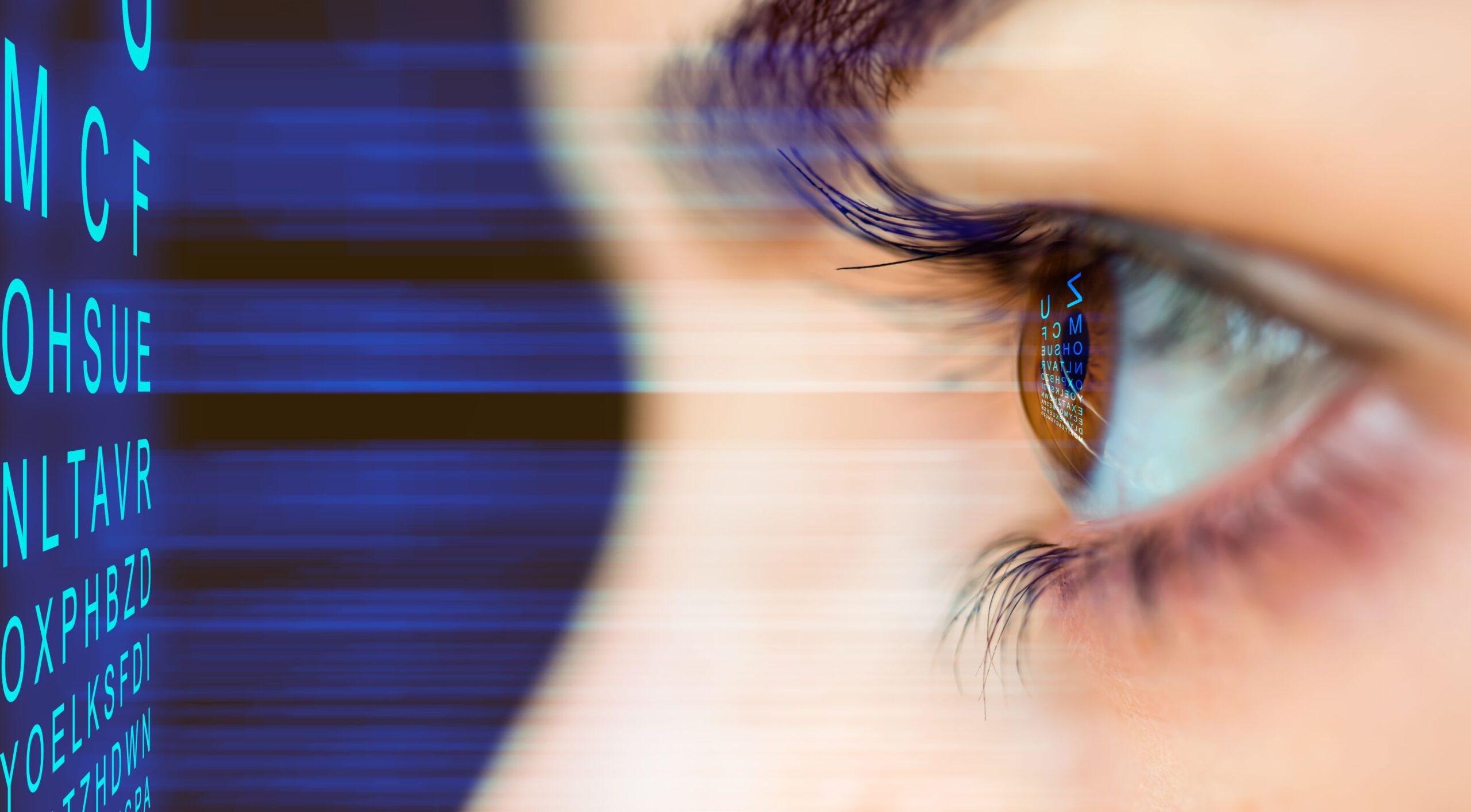Save Your Vision Month is observed every March and sponsored by the American Optometric Association. Optometrists sponsor Save your Vision Month to increase awareness about good eye care. We also encourage everyone to get regular eye exams to help you catch the problem before it becomes an issue. With computers becoming an everyday part of people’s lives, the risk of eye strain and damage is higher than ever.
Save Your Vision Month reminds us not to take our eyes for granted. From work to entertainment, eyes are a large part of our everyday life. It is important to note that just like visiting the doctor or dentist regularly, eye checks are also important.
We are going to share with you six ways you can help your customers save their vision.
Regular Eye Exams 
Annual exams go well beyond just having blurry vision. When your customer comes in for their yearly eye exam, you can detect serious health concerns. For example, diabetic retinopathy is diagnosed with a dilated eye exam. Glaucoma is a silent, sneaky disease that can often go unnoticed until irreparable vision loss.
Adults with no signs or risk factors for eye disease should get a baseline eye disease screening at age 40. This is the time when early signs of disease and changes in vision may start to occur. Based on the initial screening results, an ophthalmologist will prescribe the necessary intervals for follow-up exams. Anyone with symptoms or a family history of eye disease, diabetes, or high blood pressure should see an ophthalmologist to determine how frequently your customer should have their eyes examined.
And don’t forget the kids! Unfortunately, kids are developing Myopia (nearsightedness) at an alarming rate. Kids diagnosed with Myopia are at risk for developing glaucoma and cataracts later in life. Many parents don’t bring their children in for a comprehensive eye exam because they get a vision screening at school. Vision screenings are just that, a screening. The screenings will alert parents to a possible issue, but it is estimated that up to 75% of school screenings miss vision problems.
Eye Protection

An estimated 2.5 million eye injuries occur in the U.S. each year, so it is critical to wear proper eye protection to prevent eye injuries. If you are participating in a sport or just working in your garage, wear protective goggles. The dangers of playing baseball, for example, can result in orbital fractures, cornea abrasions, or even a retinal detachment. Protective eyewear is key in reducing sports-related eye injuries. Even in your garage, protective goggles can reduce the risk of airborne particles from woodworking or other projects entering your eyes.
Wear Sunglasses

It may seem like a “no-brainer” when the sun is shining bright, but it is also essential to wear them anytime you are outdoors. UV blocking sunglasses delay the development of cataracts since direct sunlight hastens their formation. Sunglasses prevent retinal damage; they also protect the delicate eyelid skin to prevent both wrinkles and skin cancer around the eye and cancerous and non-cancerous growths on the eye. Check for 100 percent UV protection: Make sure your sunglasses block 100 percent of UV-A rays and UV-B rays.
Eat Right

Vitamin deficiency can impair retinal function. The belief that eating carrots improves vision has some truth, but a variety of vegetables, especially leafy green ones, should be an important part of your diet. Researchers have found people on diets with higher levels of vitamins C and E, zinc, lutein, zeaxanthin, omega-3 fatty acids DHA and EPA are less likely to develop early and advanced AMD.
Family History

Many eye diseases cluster in families, unfortunately. You’ll need to know some of the family’s history of eye disease because they may be at a higher risk of age-related diseases. Age-related eye diseases, including cataracts, diabetic retinopathy, glaucoma, and age-related macular degeneration (AMD), are expected to dramatically increase from 28 million today to 43 million by the year 2020. Glaucoma and AMD are more easily and successfully treated if diagnosed and treated early. Left untreated, these diseases can cause serious vision loss and blindness. Early intervention today will prevent vision loss later.
Eye Fatigue and Strain

The average American worker spends seven hours a day on the computer either in the office or working from home. Viewing a computer screen makes the eyes work harder. The high visual demands of computer and digital screen viewing make people susceptible to develop vision-related issues.
Be sure to find out how many hours your customer spends looking at a computer screen and suggest getting some “blue-light blocking” lenses to help save themselves from eye fatigue, eye strain, and other vision-related issues.